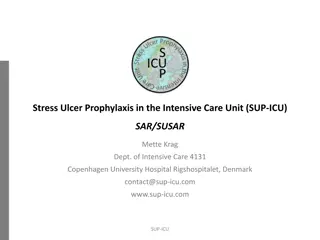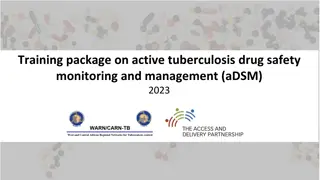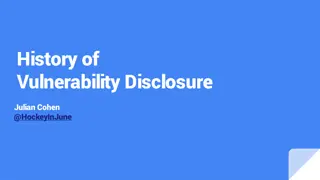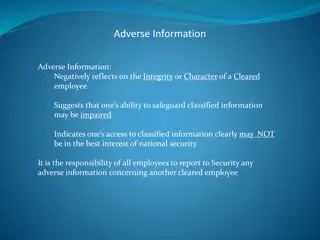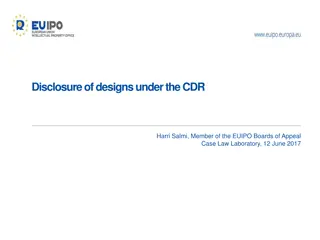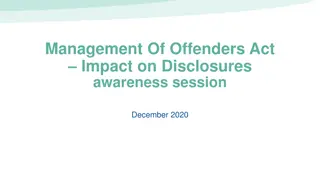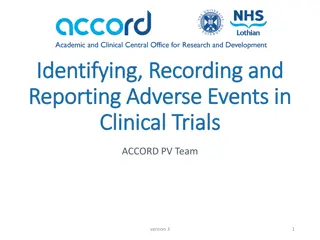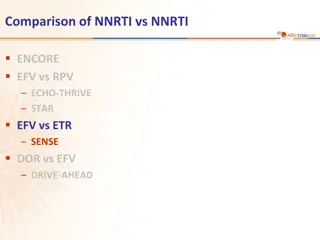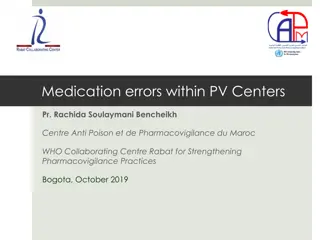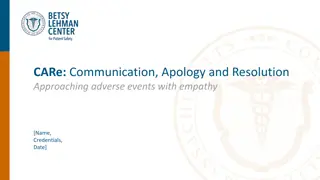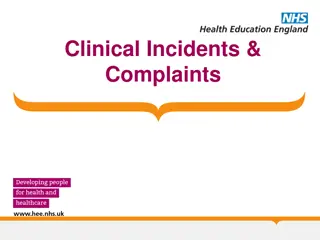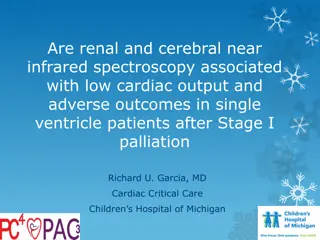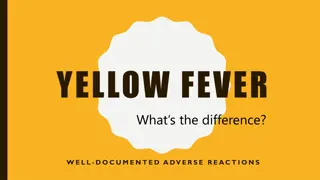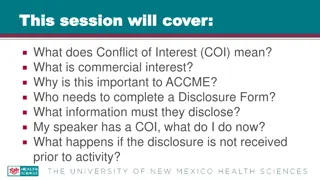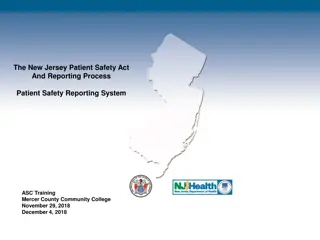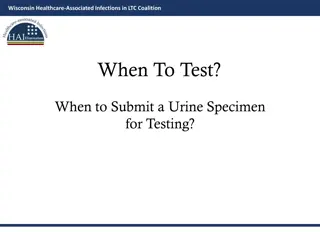Understanding Disclosure of Adverse Clinical Events in Healthcare
Exploring the essential elements of disclosing adverse clinical events to patients and families in healthcare settings. It covers why disclosure is crucial, barriers to disclosure, triggers for disclosure, policies and procedures, and the other important aspects related to the disclosure process.
Download Presentation

Please find below an Image/Link to download the presentation.
The content on the website is provided AS IS for your information and personal use only. It may not be sold, licensed, or shared on other websites without obtaining consent from the author. Download presentation by click this link. If you encounter any issues during the download, it is possible that the publisher has removed the file from their server.
E N D
Presentation Transcript
Disclosing Adverse Clinical Events to Patients and Families Fundamental Elements
Why should we disclose? o Patients have the Right to Know o To improve Physician/ Patient Relationship - Trust o To improve patient care and prevent future occurrences. o Professional ethics o Reduced liability costs (University of Michigan Disclosure Program) o Required by the NJ Department of Health 1
Barriers to Disclosure Fear of Liability Concern about Patient and family response Lack of comfort with the process 2
Triggers for disclosure A serious preventable adverse event that results in: o An unintended injury or illness o Death o Loss of a body part o Disability o Loss of bodily function lasting more than seven days or still present at the time of discharge from a health care facility. An adverse effect resulting from an allergic reaction not previously documented in the patient s medical history 3
Cooper Policy and Procedures/NJ State Law Regarding Disclosure Requires responsible licensed independent practitioner/designee within 24 hours of discovery to: Disclose the event Apologize honestly and openly to the patient (and/or family) and answer their questions Provide the patient and/or family all information needed for current and future healthcare decisions Record in the chart that the disclosure was made, the date and time it was made, who it was made to, and the individuals present at the disclosure. This is not subject to discovery or for use in litigation (N.J. Admin. Code 8:43E-10.9) 4
The Other 4 Ws of Disclosure Who should disclose (may be one or more of the following) o Healthcare provider(s) involved in the unanticipated outcome o Provider(s) with responsibility for ongoing care o Person(s) with ability to answer questions (Medical Director or Administrator) What to disclose o The nature of the event, consequences for the patient, and what is being done to correct it When to disclose o After immediate health care needs are addressed o Within 24 hours of discovery of the event o Patient is physically and emotionally ready and gives permission to discuss with family if applicable Where to disclose o Consider privacy and patient s current health needs, comfortable seating and limit number of people. 5
How to Disclose Use a short, concise message with a simple description of current condition and the next steps in the patient s medical care treatment options. Focus on the patient s and family s needs Apologize-- Express empathy and compassion for pain o I m sorry that you and your family have experienced this event Responsibility provide objective information no blame Elicit questions or concerns and ensure understanding o Ask if they have any questions or if they need anything at this time. Plan the next step/next contact and close discussion o Provide name of a contact person 6


